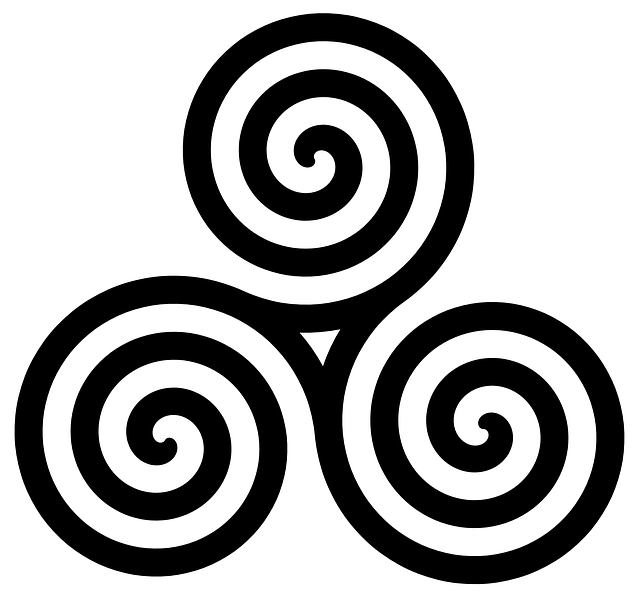










In the olden days, the concept of chance and randomness became synonymous with fate; lots were thrown and dice tossed to see what the Mother Goddess of Fate, Moirai, had in store for you. The next natural progression of thought has you questioning if synchronicity is randomness? In the big picture, randomness and synchronicity defy explanation but, interestingly enough, run along the same event driven bell-shaped curve of normal life. So therefore you can surmise that the uncommon appears actually to be common. The unpredictability of random events appears to have the same path trajectory on the graph when viewed in the big picture of history from the galactic center. The one difference is that synchronicity requires knowledge that makes it significant for it to go beyond random chance, which then gives us a different viewpoint. The one constraint we have is how we describe these events. Now we can move on from the idea of lots and dice and pose the question, do computer models achieve randomness when picking Tarot cards and can Tarot lead us to synchronicity to connect all things as in the theory of yin and yang. The answer is yes and no. Let’s pull back the prophetic curtain, take a look at the two computer models used and our part in this Tarot drama of subconscious energy of our minds that can possibly dictate the cards picked.
With the advent of computers, they have given birth to Random Number Generators (RNGs) models, which reference natural physical processes such as capricious photons, radioactive decay, electrical thermal noise, clock drift and atmospheric background-radio noise, and the more common Pseudorandom Number Generator (PRNG) models using only approximations of randomness. The PRNGs generate approximate sequences of random numbers by using seeds of hand-selected values in their algorithms and due these approximations eventually display repeat patterns after multiple loops, thus increasing the chances of certain cards coming up more often than others. Interestingly, outside of generating randomization in card shuffling, Tarot card picks, I Ching yarrow stalk and coin tosses, dice throws and slot machines odds, the surprising meat and potatoes for these models is in cryptology, encrypting computer data to secure it from the prying eyes of hackers; if the seed or key is secret, no one can access the data. Let’s put it this way, you have three-coordinate points describing a location floating in space, but for its exact location, you need a point of reference.
It became obvious to me that allowing an RNG to shuffle the Tarot cards is the best option for randomness, but to increase the odds of randomness after the shuffle, the person or seeker must manually pick the cards from the virtual deck, thus introducing another level of randomness. You then take the role of the Goddess Fortuna, who purportedly changed the position of fates on the Wheel of Fortune as it spun. This puts the randomness back into the hands of seeker. Paradoxically, the human factor involved at this point actually establishes more randomness. The odds that two humans would pick the exact same cards from two separate decks after RNG shuffling increases to almost astronomical proportions depending on the number of cards in the deck. Mathematically, the 10-card Celtic Cross spread has 4,500,000,000,000,000,000 (four and a half quintillion by US standards) possible combinations. By hand picking, you take the computer factor out of the equation and ameliorate randomness from the seeker’s mercurial choices.
The only key left is to unlock the messages through interpretation of the cards; this is where the synchronicity part comes into play. The Tarot card handler can help this along (and some are more perceptive than others), but the true interpretation is in the hands of the seeker to customize the messages to their personal experiences, circumstances, people, and happenings in his or her life. Some handlers may be seers, psychics, visionaries, and clairvoyants, but most cannot fathom the random and paradoxical process of your mind because the handler simply reports the combined meaning of the cards. The understanding has to come from you, the seeker, because you are the one to make order out of chaos or maintain order and hold chaos at bay.
The question then arises, can our subconscious manipulate the material world and the pick of the Tarot cards from mind energy? Some researchers at Princeton’s Engineering Anomalies Research (PEAR) program say it so. The experiments use what is called Random Number Generators’ global collective consciousness that measures and amasses data on the influence of the human mind’s intentions connected to the physical world of matter. After number crunching, their research statistically discovered that the odds the mind directly affects matter is 1 million to 1. Is this causal determinism, an accidental random variable of entropy that seems ever present in our lives, or a flawed theory of contradiction and paradox? This Catch-22 can be considered a paradox within a paradox. At this point, Epimenides' paradox comes to mind. Epimenides declared, “All Cretans are liars,” but he himself was a Cretan.” So is Epimenides a lair? This is where the paradox deepens, and the fallacy of unprovable wraps around to a fork in the road of true or false. In this case, the proof is not in the pudding from the nebulous and ethereal nature of Princeton's study and our limits of accuracy, precision, and reproducibility. However, gut feelings, hunches, dreams, visions, and intuition have played a major role in scientific discoveries and as well in elucidating our daily lives. If we could prove this conscious-matter connection, this write-up would be rendered superfluous. If predetermination exists, then our lives are superfluous. If I conclude that this mind-matter connectivity permeates throughout all time and space but is unprovable–am I a liar? Now if you assume both are true, can you prove I’m a lair? The problem with randomness is that you can never be sure.
The million to one finding might sound like a large number, but let’s reflect on the 10-card Celtic Cross spread that has 4,500,000,000,000,000,000 card combinations while an algorithm computer program can only spit out approximately 4-billion combinations (4,000,000,000), so in light of this, the million to one finding appears significant. According to the U.S. Lifesaving Association, the odds of being attacked by a shark are 11.5 million to 1. If you compare Princeton’s finding of 1 million to 1 for mind-matter connection in light of the odds of being attacked by shark, you’re 11.5 times more likely to have the ability to interceded in the Tarot card picks than being attacked by a shark, but alarmingly, the standard odds of dying in a plane crash are 7,178 to 1. And devastatingly, if there is a connection between mind manipulations to matter, this would relegate science to a mere hobby because it throws objectivity out the door with the baby and the bathwater.
In the end, the ultimate effect of RNG models could be considered simulated-disordered randomness while the Tarot cards are the entropic driving force towards order. Changing our collective world might have to do with us changing our collective minds. This reminds me of a book I read called, Anunnaki vs. the Cosmic Conscious Collective, by Nye Hale, which surmises that there’s an ethereal cosmic force that connects our minds for us to manipulate the physical world through the pineal gland and universal electromagnetism forces. Perhaps the purported randomness isn’t so random anymore if we can command our minds to interface with our environment. The randomness of order is as reflectively beautiful as the consciousness of the cosmic order of life.
Home
